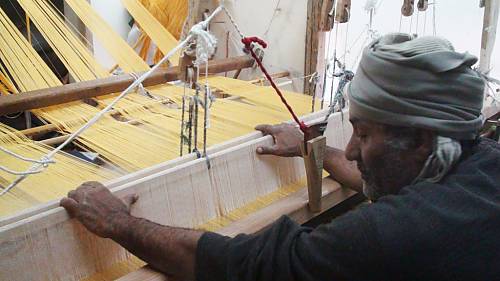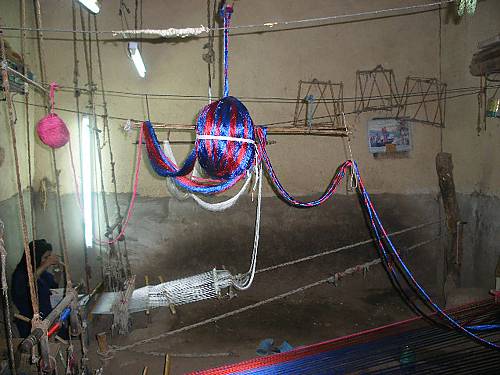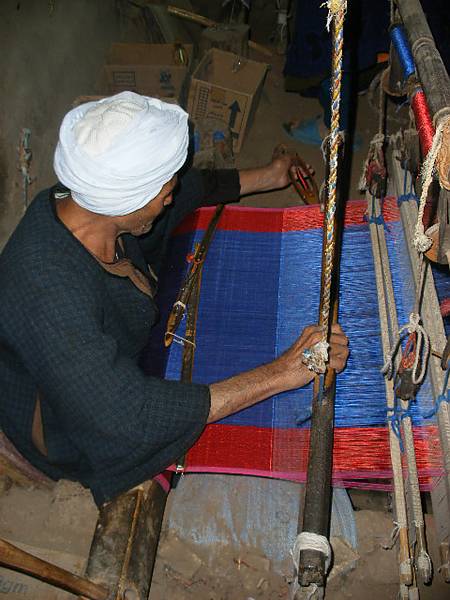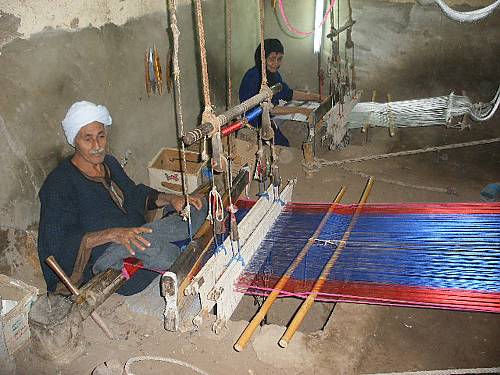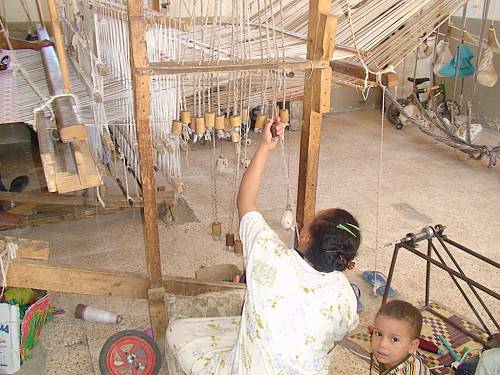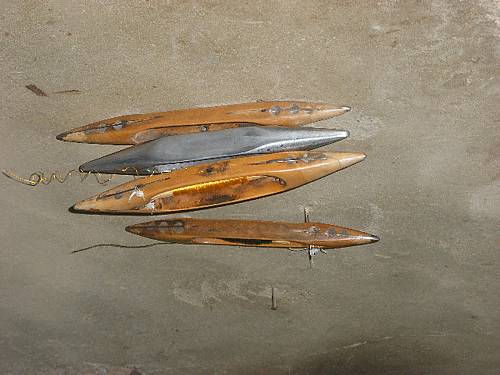Handmade weaving in Upper Egypt (Sa'eed)
Inscribed in 2020 (15.COM) on the List of Intangible Cultural Heritage in Need of Urgent Safeguarding

The craft tradition ‘Handmade weaving in Upper Egypt (Sa’eed)’ is a complex process that requires time, effort, patience and practice. Many steps and techniques are involved in the loom preparation, threading and weaving to achieve the final product; it is a work of precision and intricate workmanship. For centuries, men and women have used their inherited knowledge and artistic talent to create embroidered textiles both as a family legacy and as a profession. The basic principles have remained the same as those used in the past, whether for linen, cotton, wool or silk. However, factories that used to weave with expensive silk yarn have gradually shifted to cotton as it is more financially rewarding, and the small narrow looms have been replaced with wider ones. Handloom weaving is considered as a source of identity and pride for the communities concerned and the persistence of handloom terminology attests to its deep-rooted significance for them. The practice currently faces many threats, however. Weaving is no longer lucrative, weaving at home requires unused space to accommodate the loom, and the working materials are expensive. The craft is therefore neglected and not transmitted as it was in the past. It is believed that training a new generation of young people in this trade would provide a solution to the escalating problem of unemployment in the communities concerned.
